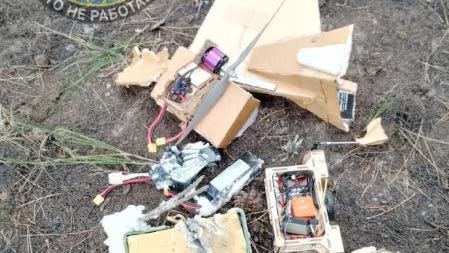In the Bradley Square area where Robotyne is situated, the Ukrainians tried to press their attack to the east toward the village of Vebove.
Unfortunately for the Ukrainians, they inadequately protected their flank around Robotyne, which exposed the attack toward Vebove to Russian artillery strikes. The Ukrainians lost the better part of an entire brigade (although which brigade it was is not clear).
Trying to occupy Robotyne turned out to be not such a good idea for Ukraine since most of the village has been flattened and also exposed to Russian artillery.
The move to the east by Ukraine is very important if it is to split Russia’s forces and move on toward Melitopol. This now is very much in question and may point to a significant failure in the latest part of the Ukrainian counteroffensive.
The outcome still remains in doubt, but the optimistic Wall Street Journal report about the breach of the Russian defensive line now seems an exaggeration.
Meanwhile, Ukraine is keeping up its drone attacks on Russian territory. A Ukrainian drone has targeted the Russian city of Kurchatov, an industrial hub near the Kursk Nuclear Power Plant.
The city of Kurchatov is located in the Kursk Region, which shares a border with Ukraine. It was founded in the late 1960s and named after physicist Sergey Kurchatov, known as the father of the Soviet atomic bomb. The Kursk Nuclear Power Plant is located around 4 kilometers (2.4 miles) from Kurchatov.
Apparently only one drone got through and hit a residential building.
Meanwhile, the Ukrainians claim they used Australian “cardboard” drones in the attack on Pskov near the Estonian border. There is controversy on how the drones reached the air base there which is more than 800 km (500 miles) from Ukrainian territory.
Ukraine is now saying they were launched from inside Russia. However, the attack involved at least 10 drones, suggesting the launch point may have been from Estonia. The Russians have not formed a public conclusion about the drone’s flight path.
The waxed foamboard drone has minimal radar signature.

The Ukrainians claim this is the drone that hit Pskov. But the Sypaq drone (officially Sypaq Corvo Precision Payload Delivery System) has a range of only 75 miles, which means if this is the drone that was used in the Pskov attack it needed to be launched from relatively close range.
The Estonian border is 38.1 miles (61.3 km) from Pskov, within range of the cardboard drone. The drone does not appear to have a camera and is likely guided by GPS. The drone itself weighs 5.3 lbs (2.4 kg) empty and can allegedly carry up to 6.6 lbs (3 kg), more than the weight of the drone itself. It is battery-powered.
The Ukrainians have said the same drones were used against the Kursk airfield on August 27, two days before the Pskov attack. Kursk is close to the Ukrainian border.
To the right is a photo of a crashed Sypaq drone from June. The location isn’t reported.
Ukraine has posted this graphic on the drone’s characteristics:

Take note that the indication of redundant navigation systems means the drone is pre-programmed to hit a specific target and updates itself so long as it has GPS information. Typical jammers are located around high-value targets.
The above photo shows no camera pod. The Australian drone is produced from commercial off-the-shelf components, likely Chinese in origin.
Putin is walking on eggshells if his generals insist the attack came from Estonia, since that would make Estonia complicit in the attack. What Russia might do about Estonia is unknown.
Meanwhile, the Russians have slowed down their operations in the Kupyansk area and have stopped a number of Ukrainian counterattacks. It does not look now that the Kupyansk offensive is advancing, except on the periphery.
There are reports that Ukraine will attempt a major mobilization this month. This is likely to backfire on Zelensky as those who will be recruited include students, factory workers and overage men. Russia, so far, has not announced any further mobilization.
Ukraine has now used virtually all of its strategic reserve units and is now filling and patching with far less capable territorial units drawn from Lviv (the 125th territorial reserve) and the area bordering Moldova (106th brigade), which have been sent to the Kupyansk area – where Russia may start a major offensive.
This leaves the Ukrainian army without reserves and with very great losses in the field. Even with a mobilization planned for September, Ukraine will not be in a position to continue offensive operations, especially if the high losses continue.
Stephen Bryen is a senior fellow at the Center for Security Policy and the Yorktown Institute. This article was originally published on Weapons and Strategy, his Substack. Asia Times is republishing the article with permission.


